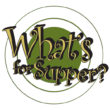“What’s that?” she says, spinning the drum with pictures of vegetables next to the register.
“It’s eggplant.”
“Oh. What’s eggplant? I’ve never had any. What does it taste like?”
Repeat this conversation with, roughly, half Huntsville’s grocery check-out clerks and it starts to be a theme. And not just eggplant, but shallots, zucchini, leeks, any peppers other than bells or jalapeno, mango, kiwi. There’s a list, and it’s not short. One clerk, somewhat overweight, doesn’t eat any vegetables. None. “How about macaroni and cheese?” she asked a friend as I listened. Is that a vegetable?” No, particularly if you’re mixing an orange powder from a box on top of some noodles.
I guess it could be worse. The British chef Jamie Oliver is finding out that West Virginia children and their parents know very little about what it is that they’re eating. In a recent televised interview, he held out some tomatoes on a vine to some ten-year-olds, asking them, “What’s this?” They had no idea. Never seen such.
It’s the result of sixty years or more of factory food, mixes, frozen entrees and the like, I suppose. Kraft and General Mills, fast-food giants like MacDonalds, Taco Bell, Burger King, packaged-food purveyors like Sysco, factory farm monster companies like Archer Daniels Midland, all have virtually total control over food production and the food messages people get. And the message is all about fast, easy, pre-packaged and never mind the chemicals.
So what can you do?
Just keep pushing fresh, handmade, non-pre-fabricated, non-manufactured food. Nothing from mixes. Nothing, if at all possible, that isn’t fresh. We constantly suggest vegetable-heavy recipes and combinations for our parties and events.
And we’ll be happy to introduce anyone who’ll try it to eggplant. We’ll prepare it sliced, sauteed with herbs in olive oil, and stacked with marinara, pesto and cheeses. Or we’ll use slices of eggplant as a substitute for pasta in lasagna. Or stuff it with shrimp and it’s own pureed insides. Or whip up some with cilantro and scallions. Or, with the long, skinny Japanese variety, grill some with a little oil and herbs and eat it with goat cheese. Or, in the heat of mid-summer, put some in ratatouille. I could go on.
Do your part for the food education. Eat an eggplant today. Give some to your friends. Try a little adventure in good eating.


